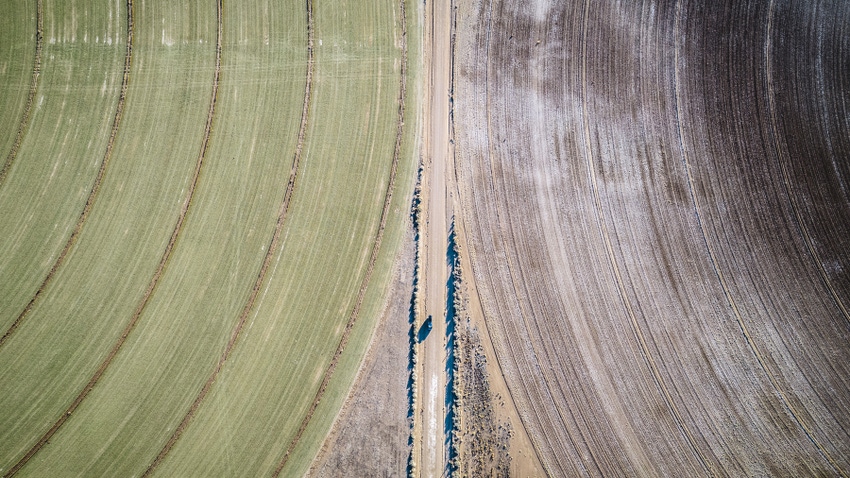September 5, 2023

As I write this, I just finished up an article for Sorghum Grower magazine giving an overview of the concept of water finance as a tool to combat water scarcity. Many of my readers are irrigated farmers who aren’t strangers to the challenges water scarcity brings. I’m one myself — and I’m no stranger, either. The harrowing tale of the Aral Sea, once a vibrant freshwater body on the border of Kazakhstan and Uzbekistan, now reduced to a desolate desert, serves as a grim reminder of the endgame for water supplies taxed beyond their limit.
Right here in the Sorghum Belt, the Ogallala Aquifer is undergoing changes as well. Water is our lifeline, yet many of us feel powerless to stop the slow depletion of this essential resource. Rental arrangements, financial constraints and other factors hinder our ability to reduce pumping, even though everyone in agriculture recognizes the urgency of the situation.
Buzzword no more
I’ve written extensively — usually a couple of times each year — about using sorghum as a tool for reducing irrigation water needs. However, the cost associated with reducing pumping is often ignored. Fortunately, environmental finance has become more accessible in the last decade, with the spotlight now shifting to water finance.
Water finance is evolving from being just another buzzword term in agriculture to a potential lifeline for sustainable farming. It involves innovative financial incentives that balance our economic needs with the preservation of water resources. It’s about using a combination of loans, grants, equity, debt and other financial instruments to make water management economically viable.
For farmers in West Texas, water finance has breathed new life into Comanche Springs, once home to Texas’s sixth-largest spring system. The support from nonprofits like Texas Water Trade (TWT) at Comanche Springs and private financiers like Water Foundry Ventures is restoring sustainable flow through the efficient use of financial incentives for irrigation technologies and financial support for companies seeking to deliver these technologies to farmers.
Imagine what would happen if the Ogallala Aquifer were to meet the same fate as the Aral Sea. That frightening scenario is not just hypothetical; it’s a looming possibility. The rich productivity of farmland in the sorghum belt would prevent the type of desertification that’s occurred on the former Aral Sea floor, but the economic impacts on rural communities would be no less disastrous.
The success in restoring Comanche Springs demonstrates that we can protect water resources without harming production quality. By investing in innovative irrigation technologies and conservation practices, we can build a more resilient and sustainable farming future.
Beyond carbon credits
It’s time to look beyond carbon credits. Water finance is paving the way for buying, selling and trading water rights, rewarding land managers for sustainable practices. The private sector is stepping up, with groups like Water Foundry Ventures leading the charge to fund companies enabling these changes.
The future of water is digital. Smart precision agriculture is becoming an essential tool in water management. Through access to these data and decentralized supply and treatment, the use of water resources is now open to investment.
Privacy is still of supreme importance, so for farmers uncomfortable with the idea of opening their operation to this type of outside attention, participation is optional. But for those interested in financial incentives for reduced pumping, data hold the keys to the kingdom.
The road ahead is long, but with the financial mechanisms being championed and the growing interest in water investment, the way is clear. We are no longer powerless in the face of dwindling resources.
Preventing the Ogallala Aquifer region from resembling the Aral Sea region is an achievable goal. The largest obstacle, funding, is now being addressed through water finance. Farmers have access to the tools, technologies and financial resources needed to secure a better water future, and the companies providing these tools and technologies themselves have the financial resources to innovate.
Let’s take inspiration from the success stories in our region, like TWT’s work at Comanche Springs, and invest in a sustainable future. Water is not just a resource; it’s our legacy for future crops and generations. By working together, embracing innovative technologies and using mechanisms like water finance, we can ensure that the Ogallala Aquifer remains a symbol of life and prosperity, rather than a cautionary tale like the Aral Sea.
Duff is founder of Serō Ag Strategies and serves as a consultant to National Sorghum Producers. He can be reached by email at [email protected] or on Twitter @sorghumduff.
About the Author(s)
You May Also Like






